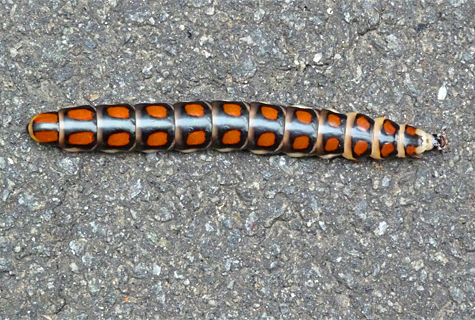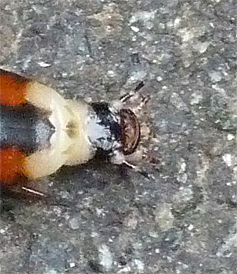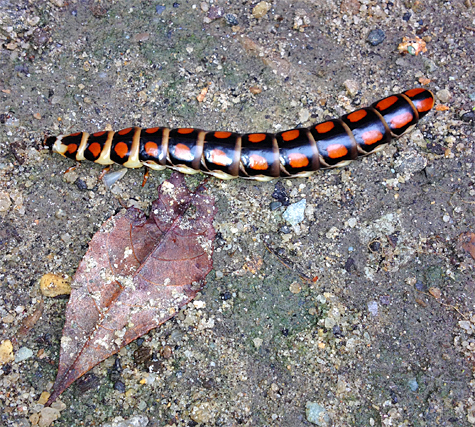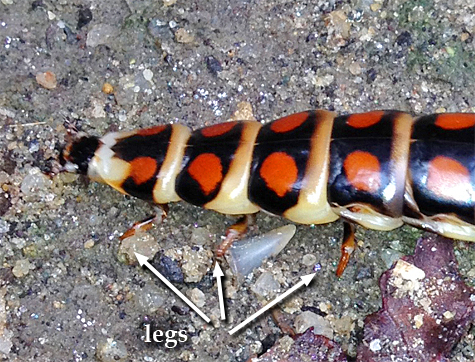A few weeks ago, I passed up a great opportunity to see something truly spectacular. I saw an insect crawling on the path just at the entrance to the boardwalk. It was something that I hadn’t seen before. I should have picked up the insect for later scrutiny, but I was being paged, and anyway, I figured a few quick photos would be good enough to identify the insect after answering my call to duty. Always pick up the specimen! (safely of course, especially when you don’t know what it is)


What was spectacular about this insect, as I would later find out, is that it was a glowworm. I had stumbled upon a female adult glowworm (Phengodes sp.). I didn’t know it at the time, but Richard Stickney (Butterfly House) set me straight, these insects glow in the dark!
I had imagined it was a larva of some insect, perhaps a beetle. I had seen soldier beetle larvae that look similar to this insect, but much smaller. This red-spotted bug was a full three inches long!
Had I known of its ability to glow in the dark I would most certainly have picked up the critter, brought it back to the “Lab” and taken some night photos of the beetle.
Glancing at the photos of the beetle, you might be tempted to think that it’s the red spots that glow in the night. It’s actually the light, cream-color parts of the beetle that illuminate the darkness.

The male glowworm beetle changes into a fly-like creature, while, as I mentioned above, the female is larviform. In other words, she looks like a larva, retaining all the body structures of a larva. The difference being that she, as an adult, has an ooporus, an opening in which to lay eggs. Neither the male or female resemble typical adult beetles.

(By the way, did you notice anything else in the above photo? Can you see the shark tooth from the Museum’s Fossil Dig Site?)
So, what’s the purpose of glowing in the dark? A reasonable assumption might be that it’s meant to attract a mate. Contrarily, males are attracted by pheromones emitted by the females which probably explains the moth-like antennae of the males (sorry, no picture of the male. Google will help you with that). It doesn’t seem as though the built-in night lights play a role in reproduction. The bioluminescence may actually be a signal to would be predators that, “I do not taste good.”
While the adult male doesn’t eat, living only briefly, female glowworms eat millipedes, although they probably consume other invertebrates as well. Could this be why they don’t taste good? I’ve read that certain poison dart frogs use toxic compounds found in millipedes in their own defensive strategies. Whether that’s true or not, I can’t say, but it seems reasonable.
There are many things that are poorly understood about glowworms, there’s much to be learned. However, there are a couple of things about glowworms that I’m sure of; the next time I see one making its way across the path that I’m walking on, that little glowworm is going in my pocket. And, I will get some photos of it glowing in the dark. Those are certainties!
Check out these photos Richard Stickney has of glowworms on Flickr:
https://www.flickr.com/photos/rstickney/9613116650/in/photostream/